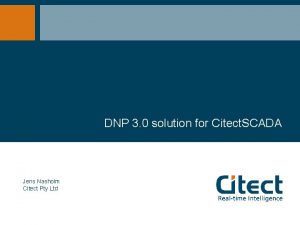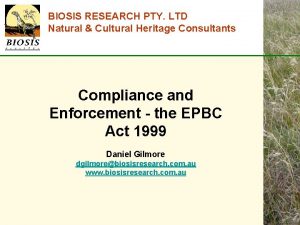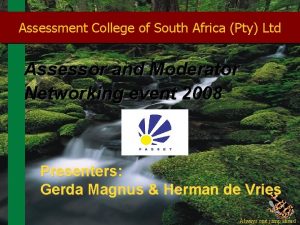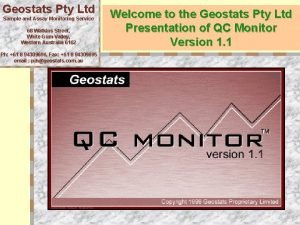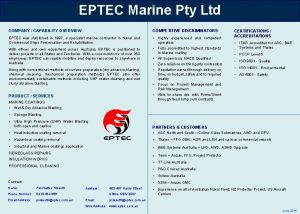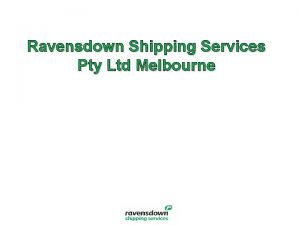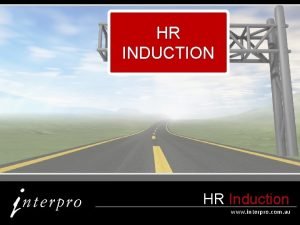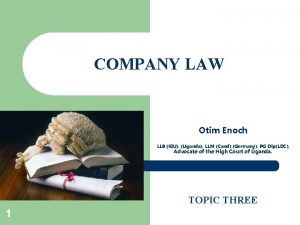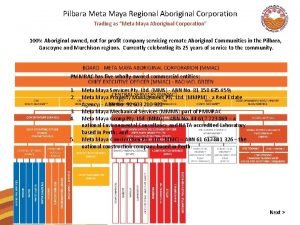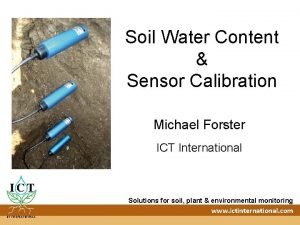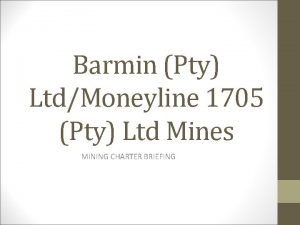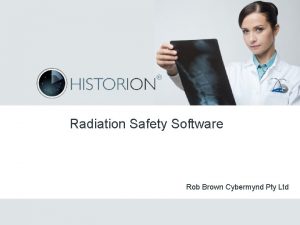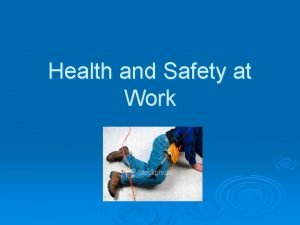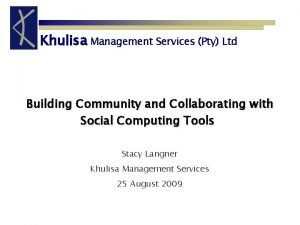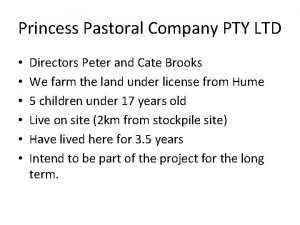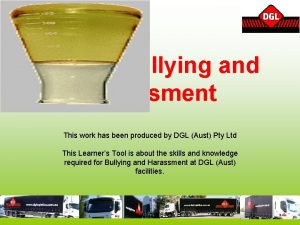Work Health and Safety HRhelp Pty Ltd name
![Work Health and Safety HRhelp Pty Ltd [name] [date] Work Health and Safety HRhelp Pty Ltd [name] [date]](https://slidetodoc.com/presentation_image_h2/517a5343fd22f26128b58e71f903cc93/image-1.jpg)













- Slides: 14
![Work Health and Safety HRhelp Pty Ltd name date Work Health and Safety HRhelp Pty Ltd [name] [date]](https://slidetodoc.com/presentation_image_h2/517a5343fd22f26128b58e71f903cc93/image-1.jpg)
Work Health and Safety HRhelp Pty Ltd [name] [date]

Overview WHS – harmonisation, why pay attention and what has changed? Responsibilities Managing risks and hazard identification Workplace consultation

WHS in a nutshell • WHS laws have been harmonised across Australia. • New legislation commenced nationally 1 st January 2012. • Main differences: • Specific obligations are spelt out. • No longer reverse onus on employers to ‘prove innocence’. • More of a focus on consultation.

Why pay attention? • In 2007/08, there were 134, 835 workers’ compensation claims for serious work-related injuries or illnesses (13. 8 serious claims per 1000 employees). • One-quarter of serious claims require 12 or more weeks off work. • Overall there were 53 claims per 1000 employees. • Work related injury and illness were estimated to cost $57. 5 billion in the 2005/06 financial year, this represented 5. 9% of the GDP. • How would a serious injury impact on your business?

What has changed? Old term New term Employer PCBU (Person Controlling a Business or Undertaking) very broad, covers businesses or undertakings including employers, principal contractors, head contractors, franchisors Management Officers “someone who makes or participates in making decisions that affect the whole, or a substantial part of, a business or undertaking” Employees Workers

What has changed? New legislation PCBU is expected to so far as is reasonably practicable, ‘ensure the health and safety’ of workers and others who may be affected by the carrying out of work, by managing risks. This involves: • eliminating the risks, so far as is reasonably practicable, and • if not reasonably practicable—to minimise the risks, so far as is reasonably practicable. Officer has a positive duty to exercise ‘due diligence’ to ensure that the PCBU complies with any duty or obligation under the legislation. officers are individually ‘off the hook’ if they act diligently. Old legislation No significant difference Major improvement over some previous states’ laws because the obligations of officers are now specifically spelt out

Managing risks Employers must • IDENTIFY all foreseeable workplace hazards • ASSESS risks posed by hazards • CONTROL or eliminate risks • REVIEW the assessment and controls

Assessing risks

Controlling or eliminating risks

Work Safety Action Plan – Top 5 Hitlist Hazard (What can go wrong? ) Assessed Risk - Harm x Likelihood (How bad could it be and how likely is it to go wrong? ) Current Solution (how effective are existing controls? ) Decision / Action Plan (Who is responsible / When Due / When Completed)

H&S Policies and Master Plan H&S Policies & Master Plan Policies, roles & responsibilities, objectives, measures, industry legislative requirements Tools & Templates Hazard identification forms, H&S checklists, procedures, training guides, reporting templates

Evaluate & Review • Have the controls been effective? • Short & long term measures • Consult & document

Workplace consultation • Must enable employees to contribute to decisions affecting safety at work • Provide employees with – information – opportunity to express views – views valued, taken into account by employer • Publicise the arrangement – consultation statement It is important to consult when making changes or undertaking reviews and risk assessments

“Safety is not an intellectual exercise to keep us in work. It is a matter of life and death. It is the sum of our contributions to safety management that determines whether the people we work with live or die”. - Sir Brian Appleton
 Tesn international freight pty ltd
Tesn international freight pty ltd Safbc
Safbc Citect pty ltd
Citect pty ltd Biosis pty ltd
Biosis pty ltd Assessment college of south africa
Assessment college of south africa Geostats pty ltd
Geostats pty ltd Eptec pty ltd
Eptec pty ltd Ravensdown shipping services pty ltd
Ravensdown shipping services pty ltd Nec australia pty ltd
Nec australia pty ltd Environex international pty ltd
Environex international pty ltd Interpro australia pty ltd
Interpro australia pty ltd Re noel tedman holdings pty ltd
Re noel tedman holdings pty ltd Meta maya construction pty ltd
Meta maya construction pty ltd Ict international pty ltd
Ict international pty ltd Sbr auto components ltd
Sbr auto components ltd


